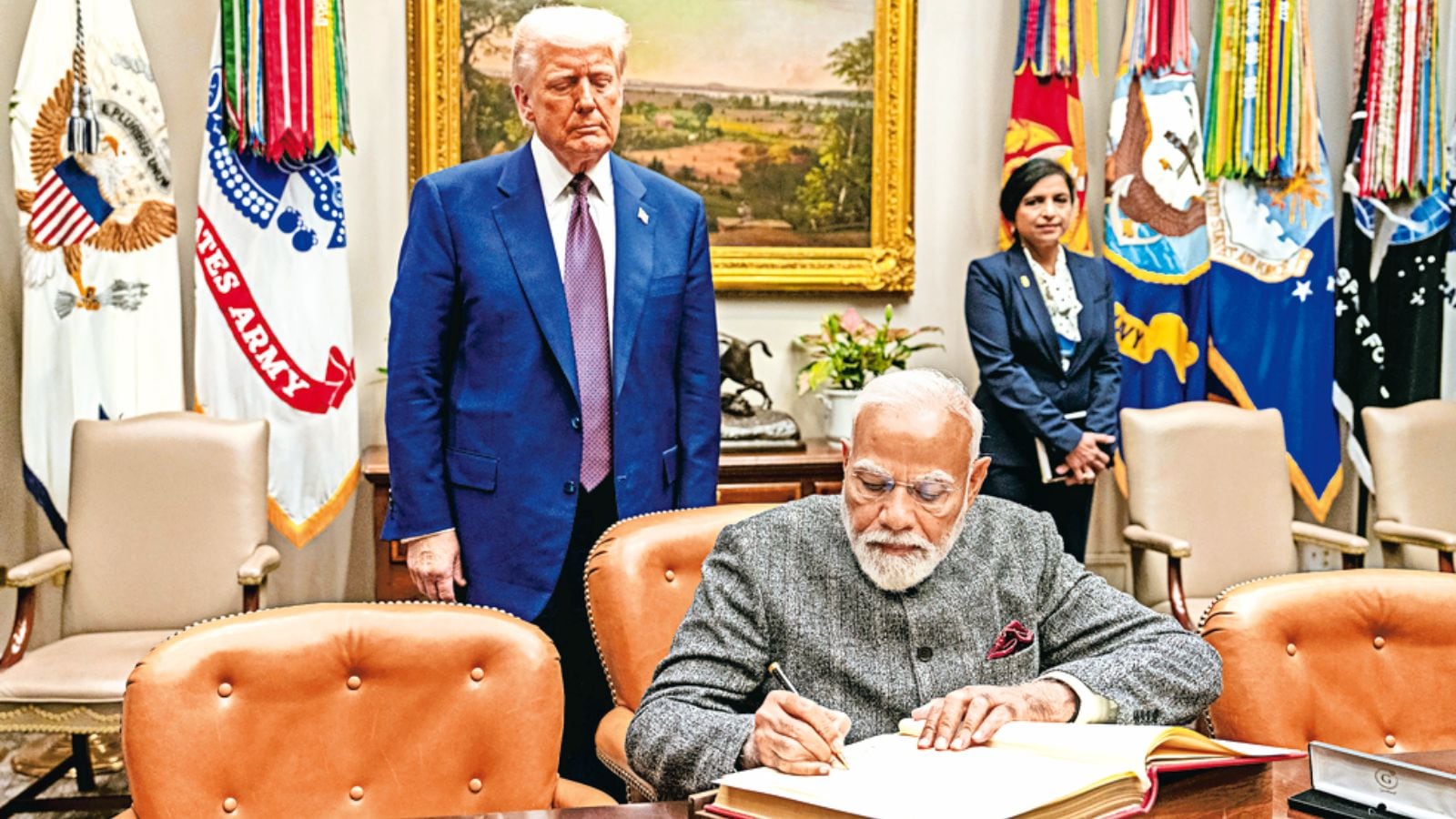 |
|
The recent shifts in US policy under President Trump have introduced a period of uncertainty in India-US relations, drawing parallels to the tensions caused by China's actions in Galwan. This development places India in a precarious position, navigating strained relations with both the US and China simultaneously. The irony is palpable as China now seemingly champions India's strategic autonomy, while Pakistan explores new alliances with Trump, offering avenues for crypto currency and critical mineral assets. This complex geopolitical landscape underscores the need for India to carefully manage its relationships and prioritize its national interests.
Prime Minister Modi's commitment to safeguarding the interests of Indian farmers and those dependent on the dairy and fisheries sectors highlights the high stakes involved in this bilateral partnership. The US is India's largest trading partner, with bilateral trade reaching $131.84 billion in 2024-2025, and India enjoys a trade surplus of $41.18 billion. A significant 20 percent of India's exports are directed to the US, with 80 percent of these exports originating from MSMEs. The potential impact of tariffs and trade restrictions could have a severe whiplash effect on sensitive sectors of the Indian economy. The EU, with its stringent quality standards, does not present a viable alternative in the short term.
Furthermore, remittances from the Indian diaspora in the US contribute significantly, accounting for 30 percent of the total $135 billion. Any targeting of work visas for Indians would lead to a sharp decline in these remittances. Given the service sector's dominant role, comprising over 50 percent of India's GDP, any downsizing in the US would result in substantial layoffs. The reduction in student visas issued by the US, with a 44 percent drop in F-1 visas in the first half of 2025 compared to the same period in 2024, is another cause for concern. This decline could limit access to high-tech education for students in STEM fields, while also impacting the US economy, which benefits from the $12-17 billion spent annually by Indian students.
Defense and security cooperation between India and the US have expanded substantially in recent years, driven by foundational agreements such as LEMOA, COMCASA, and BECA. The Security of Supply Agreement (SOSA) has also been finalized, and the finalization of Reciprocal Defence Procurement (RDP) would further strengthen ties. The two nations conduct numerous joint exercises, and military hardware imported from the US enhances India's defense capabilities, particularly given the ongoing development of its military-industrial complex. However, some US analysts argue that India has overestimated its global influence and that it cannot effectively deter China without the support of the US. The fallout from recent disagreements on the renewal of the 10-year Indo-US Defence Framework Agreement also warrants careful consideration.
Despite the substantial political capital invested by both countries in deepening multi-dimensional engagement, several points of friction remain. India's emphasis on multipolarity clashes with Trump's desire to maintain US global pre-eminence. The US needs to acknowledge that for India, multipolarity means an Asia free from domination. The “Make in India” program does not contradict the MAGA push for onshoring due to the disparity in manufacturing costs. India's commitment to “strategic autonomy” clashes with US efforts to reset its global engagement terms. US demands for access to India's agriculture and dairy sectors would impact vulnerable sections of the Indian population. While it might be easier for India to reduce its offtake of Russian oil, provided alternatives are competitive, India needs to navigate legacy issues that make it difficult to shun Moscow entirely. The share of Russian arms in India’s procurement has decreased from nearly 80 percent to about 34 percent. India also needs to avoid creating new dependencies. India's participation in BRICS should not be viewed with suspicion, as it has consistently advocated for moderation within the grouping.
The US-India COMPACT (Catalysing Opportunities for Military Partnership, Accelerated Commerce and Technology) for the 21st Century and TRUST (Transforming the Relationship Utilising Strategic Technology) are recent initiatives that aim to foster collaboration. However, the challenge lies in preserving this collaboration amidst Trump’s techno-nationalism and punitive tariffs. The issue of India's digital and data sovereignty, vis-à-vis US tech dominance, also requires attention.
Trump's claim of credit for the May 10 India-Pakistan ceasefire highlights a difference in perspective. While the US, along with other countries, was concerned about the military hostilities, India maintains that any well-wishers might have simply urged Pakistan to approach India for a ceasefire through established military channels. This should not be construed as mediation, a concept on which India has a longstanding and principled position. The article notes that former President Bill Clinton pressured Pakistan during the Kargil War, which cannot be considered mediation either.
Regarding the Quadrilateral Security Dialogue (Quad), there have been calls for India to enhance its participation in its activities, particularly in the South China Sea. India remains strongly committed to the four-way alliance. The Indian Navy has recently conducted joint naval exercises with the Philippines in the South China Sea, demonstrating this commitment.
While the bilateral situation has reached a critical juncture, a breakdown can be avoided. India and the US must engage at multiple levels to safeguard the progress made thus far. A mutually agreeable trade deal could pave the way for a lasting partnership, promoting peace and security in the Indo-Pacific region. This requires understanding, compromise, and a long-term vision that prioritizes shared interests and mutual respect. The current situation demands skillful diplomacy and strategic foresight to navigate the complexities and ensure the continued strength of this vital bilateral relationship. Sustained dialogue and a willingness to address each other's concerns are paramount in preventing the current challenges from undermining the broader strategic partnership between India and the United States. Failing to do so could have significant ramifications for regional stability and global security.
Source: Rough patch in India-US ties shouldn’t dilute past gains
